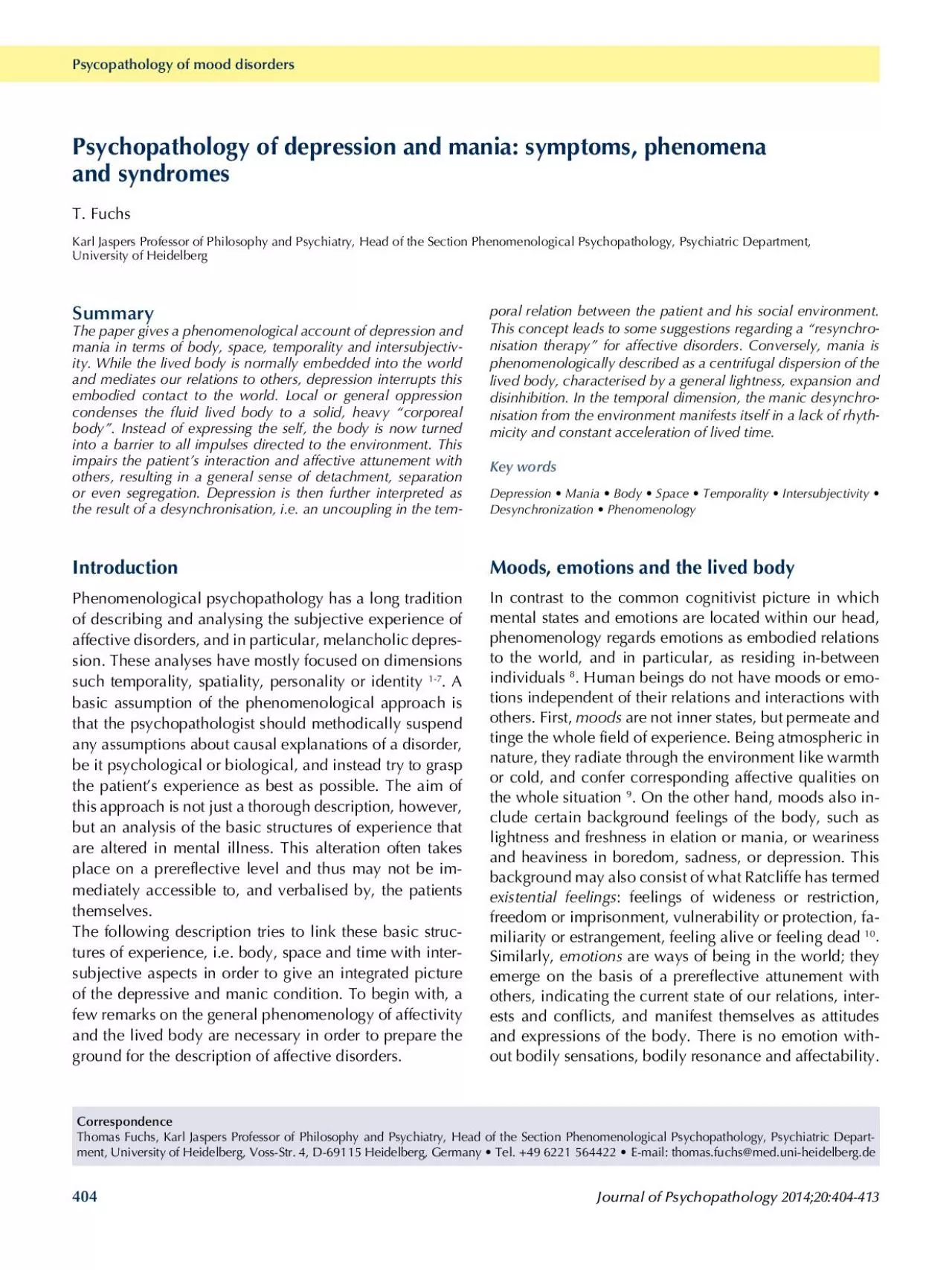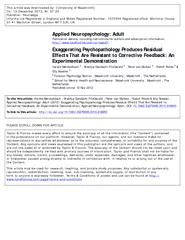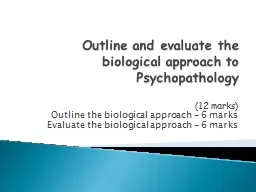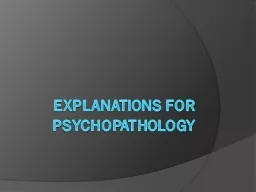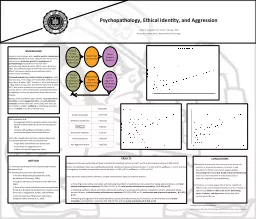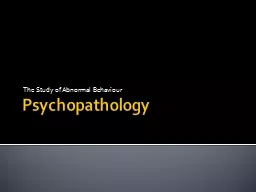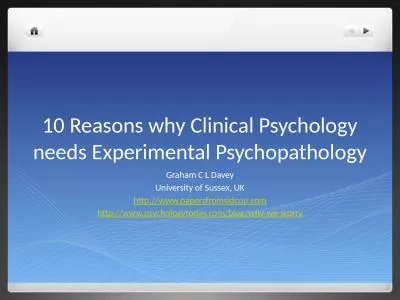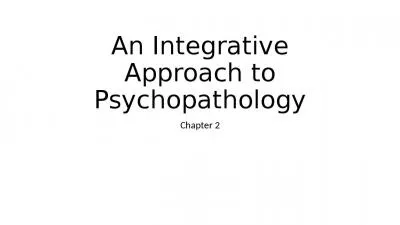PDF-404Journal of Psychopathology 201420404413
Author : kylie | Published Date : 2022-08-27
Summarymania in terms of body space temporality and intersubjectivity While the lived body is normally embedded into the world CorrespondenceThomas Fuchs Karl Jaspers
Presentation Embed Code
Download Presentation
Download Presentation The PPT/PDF document "404Journal of Psychopathology 2014204044..." is the property of its rightful owner. Permission is granted to download and print the materials on this website for personal, non-commercial use only, and to display it on your personal computer provided you do not modify the materials and that you retain all copyright notices contained in the materials. By downloading content from our website, you accept the terms of this agreement.
404Journal of Psychopathology 201420404413: Transcript
Download Rules Of Document
"404Journal of Psychopathology 201420404413"The content belongs to its owner. You may download and print it for personal use, without modification, and keep all copyright notices. By downloading, you agree to these terms.
Related Documents

